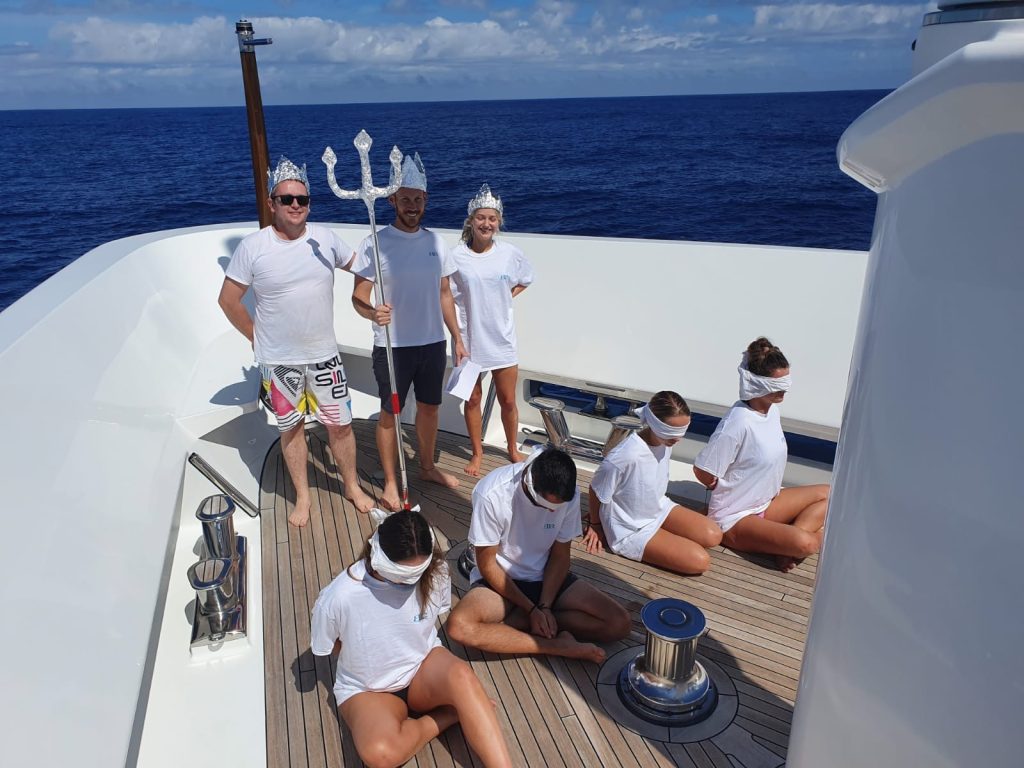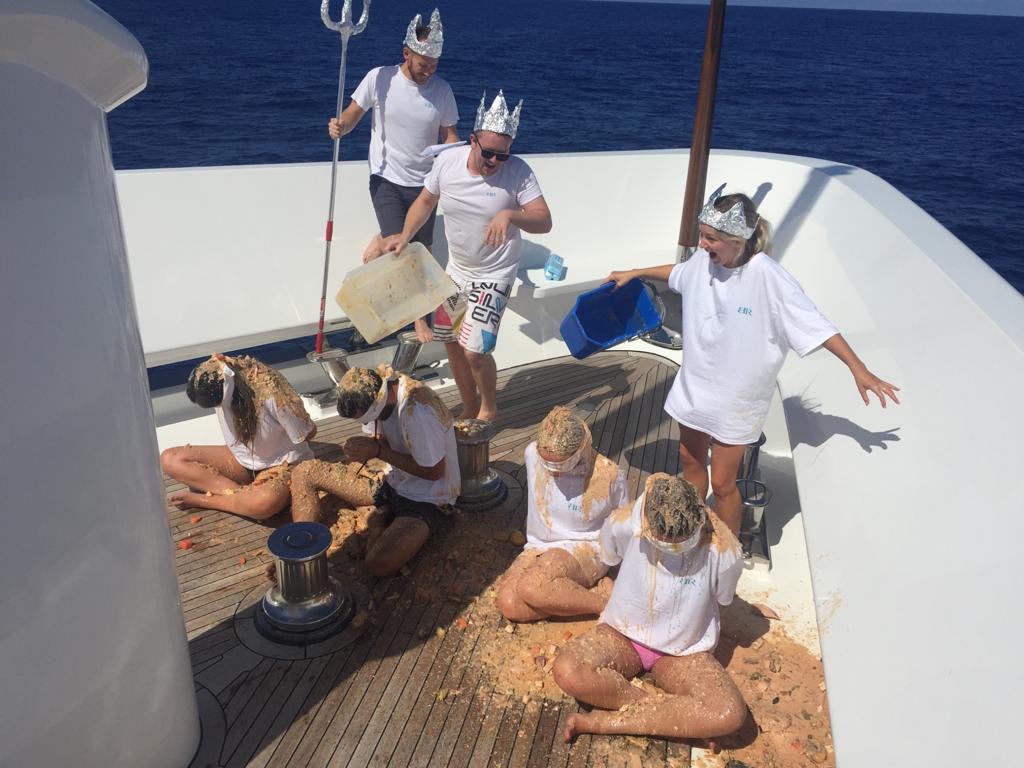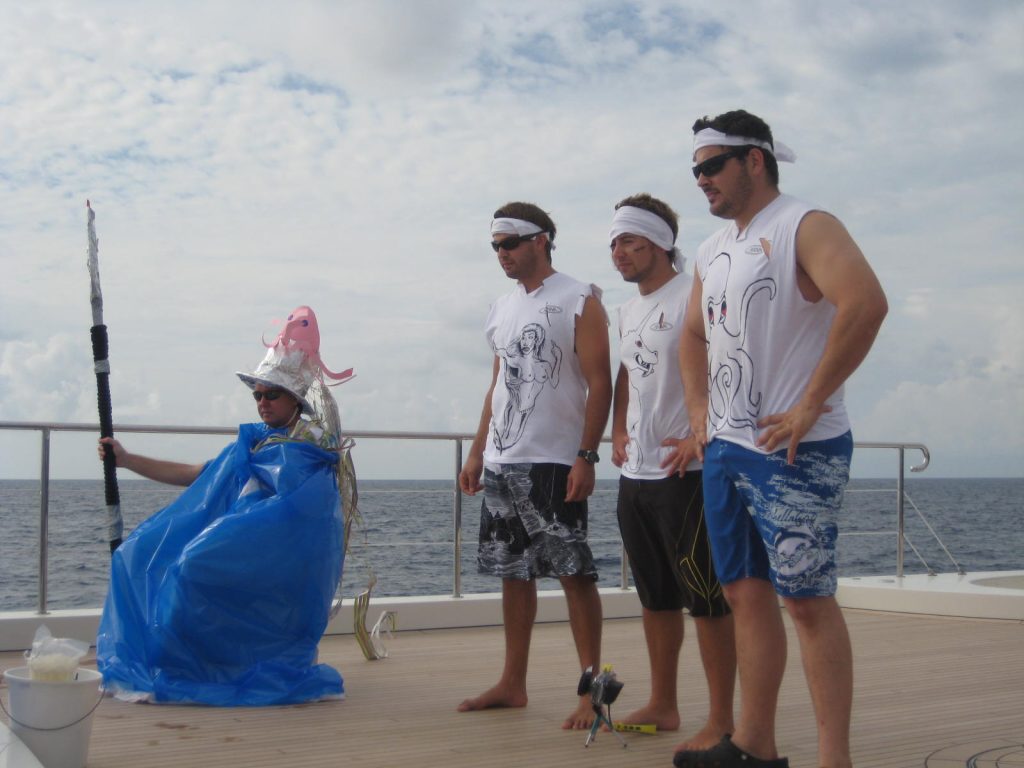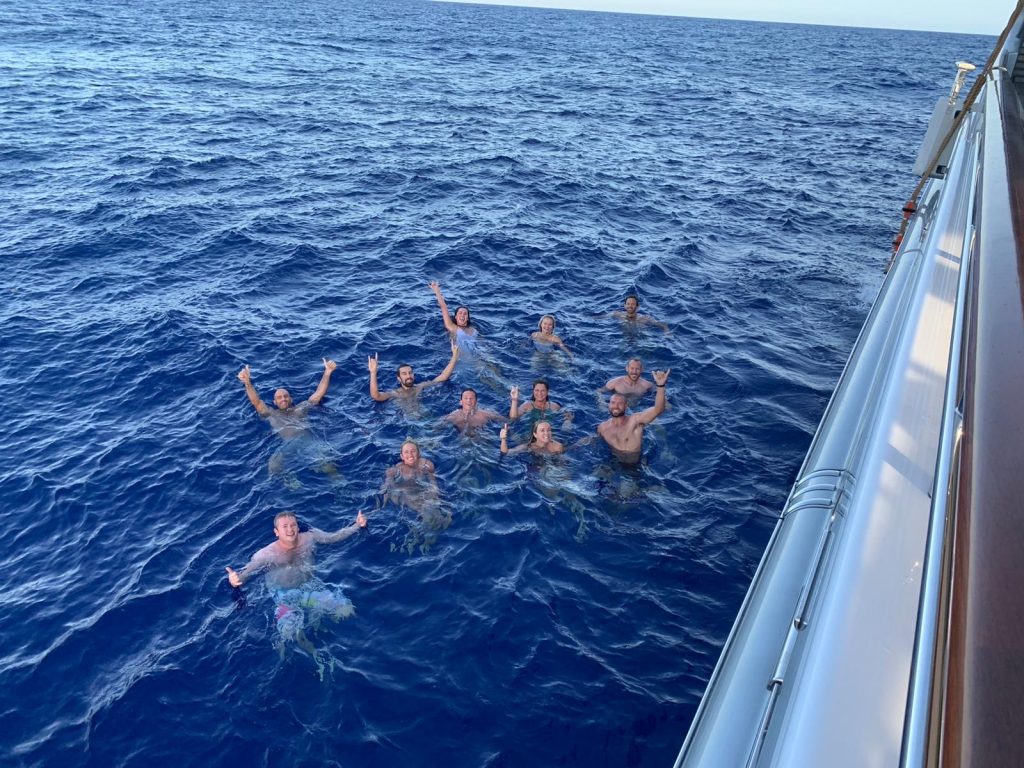Our Crew 2 Crew blog is back, written by Captain Jack Brown. This time, Jack is taking you through the Crossing The Line ceremony and what it means for crew!
For centuries, sailors have crossed the oceans, braving the elements and trying to tame the seas, among the many maritime traditions that have withstood the test of time is the ‘Crossing the Line’ ceremony. This historical ritual marks the moment a ship crosses the equator and is a rite of passage for all seafarers lucky enough to sail there.
Where Did This Tradition Start?
The Crossing the Line ceremony traces its roots back to ancient seafaring traditions, with historical accounts dating back to the days of exploration and discovery. In the past, crossing the equator was a significant milestone in a sailor’s journey, marking the transition from one hemisphere to another and symbolizing a test of endurance and courage in the face of the unknown.
Today, the Crossing the Line ceremony continues to honour this tradition with modern adaptations and interpretations. It serves as a reminder of the rich maritime heritage that sailors have inherited and a celebration of the bonds that unite them as members of a seafaring community, whether on superyachts, cruise ships, cargo vessels or in the navy.

What Does The Ceremony Look Like?
Every vessel will create their own version, but there’s a general format and a common cast of characters. King Neptune is the main character, along with Davy Jones, a surgeon, a barber and a man baby, depending on the number of Shellbacks available. Shellbacks are those who have gone through the ritual before and hold dearly their precious line-crossing certificate, the first-time participants are known as Pollywogs.
The ritual should be carried out seriously and dramatically, it requires all those who had never previously crossed the line to be charged for their crimes and get the justice they deserve. We have done it with not just crew in the past but also security teams, pilots, guests and family – all must be initiated.

The Day Before…
The day before the equatorial crossing is known as Wog Day and a sense of fear and trepidation should be instilled in the pollywogs, overheard conversations of what’s gone into the slops and how long they have been brewing, talk of freezing cold dunking’s in the sea and plans of what sea creatures must be eaten.

The Day Of!
On the day of the ceremony, the pollywogs hear a knock on their cabin’s door, the bells ring and they know the tradition is beginning. They have their hands bound and their eyes blindfolded and are marched to the bow of the ship in chain gang fashion, straight into Neptune’s court.
The pollywogs are put on their knees, get sprayed down with cold water, raw eggs broken on their heads, then dusted with flour. They are then ready to listen to Neptune’s speech, he is an intimidating figure with a booming voice. In some cases they must kiss the man baby’s belly button, or get ‘shaved’ by the barber.
They must then eat Neptune’s bounty, a piece of something vile, then they are given a truth serum to drink, usually something like tequila, chilli sauce and fish juices, this is to ensure they speak the truth and swear allegiance to Kind Neptune and the sea.
Next, individually, Neptune states the sins and crimes of each seafarer and asks in turn if they are guilty, it’s best to admit to everything at this stage to avoid further hardship. This is followed by a kiss by his family members (a raw fish, squid or octopus in the face) and finally the warm embrace of a bucket of ripe slops poured over their heads. The result is a welcome into his Court of the Ocean as a new Shellback. To round off the event, fire hoses are used to clean up the newly initiated Shellbacks, then cans of beer cracked for good luck and fair seas.

After The Ceremony
The Equator Crossing Certificate is finally handed over to the new shellbacks after the ceremony is completed, this must be kept safe and presented in the future to prove that they have been initiated and avoid another ceremony.
The Golden Shellback, is a person who has crossed the Equator at the International Date Line. The rarest Shellback status is that of the Emerald Shellback or Royal Diamond Shellback, which is received after crossing the Equator at the prime meridian, near the Null Island weather buoy.
What The Ceremony Means
For many sailors, participating in the Crossing the Line ceremony is a cherished memory that they carry with them throughout their maritime careers along with their sacred certificate. It serves as a reminder of the challenges they have overcome, the friendships they have forged, and the spirit of adventure that drives them to explore the world’s oceans. By keeping this tradition alive, sailors pay homage to the seafaring traditions of generations past and ensure that they are passed down to future seafarers.
Crew 2 Crew blog is written by Jack Brown.
Throughout his career, he has acquired extensive experience in the superyacht industry, having worked on both private and charter yachts (50m-85m) across the globe, including the Mediterranean, Caribbean, Pacific Ocean, Indian Ocean, Atlantic Ocean, USA, and North West European waters.
His expertise extends to overseeing significant refits, exceptional navigational knowledge, articulating expectations clearly and concisely, demonstrating robust project management skills, emphasising safety as top priority and excelling in fast, creative problem solving.
Jack is committed to delivering an exceptional experience onboard, creating a relaxing environment with endless opportunities for fun and exploration, utilising the incredible advantages a superyacht has to give the owner. He offers a safe, professionally run, hassle free environment onboard so that the owner can enjoy his asset to its fullest.
To keep up to date with the latest Superyacht Content News, click here.
Sign up to our Newsletter below:








.gif)












